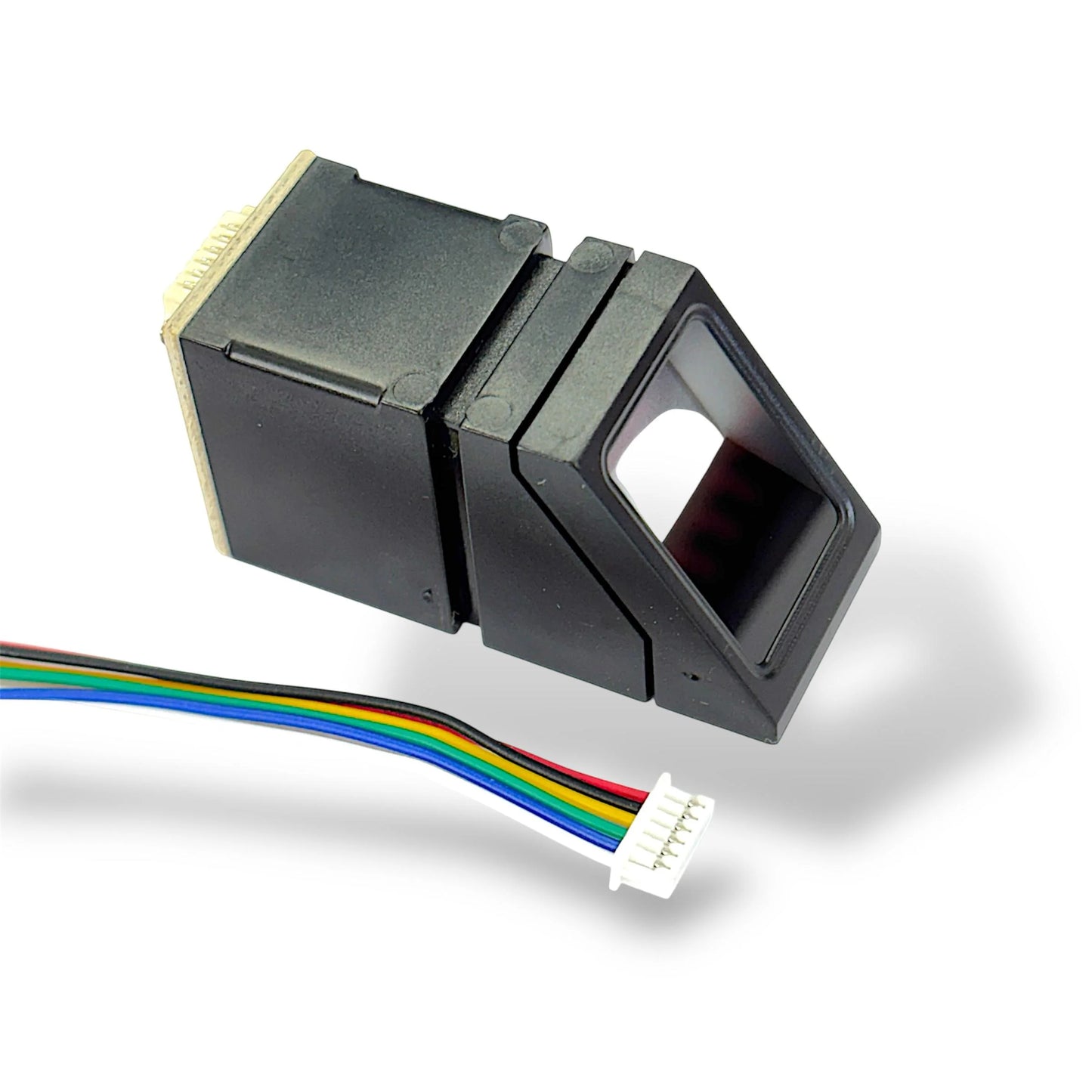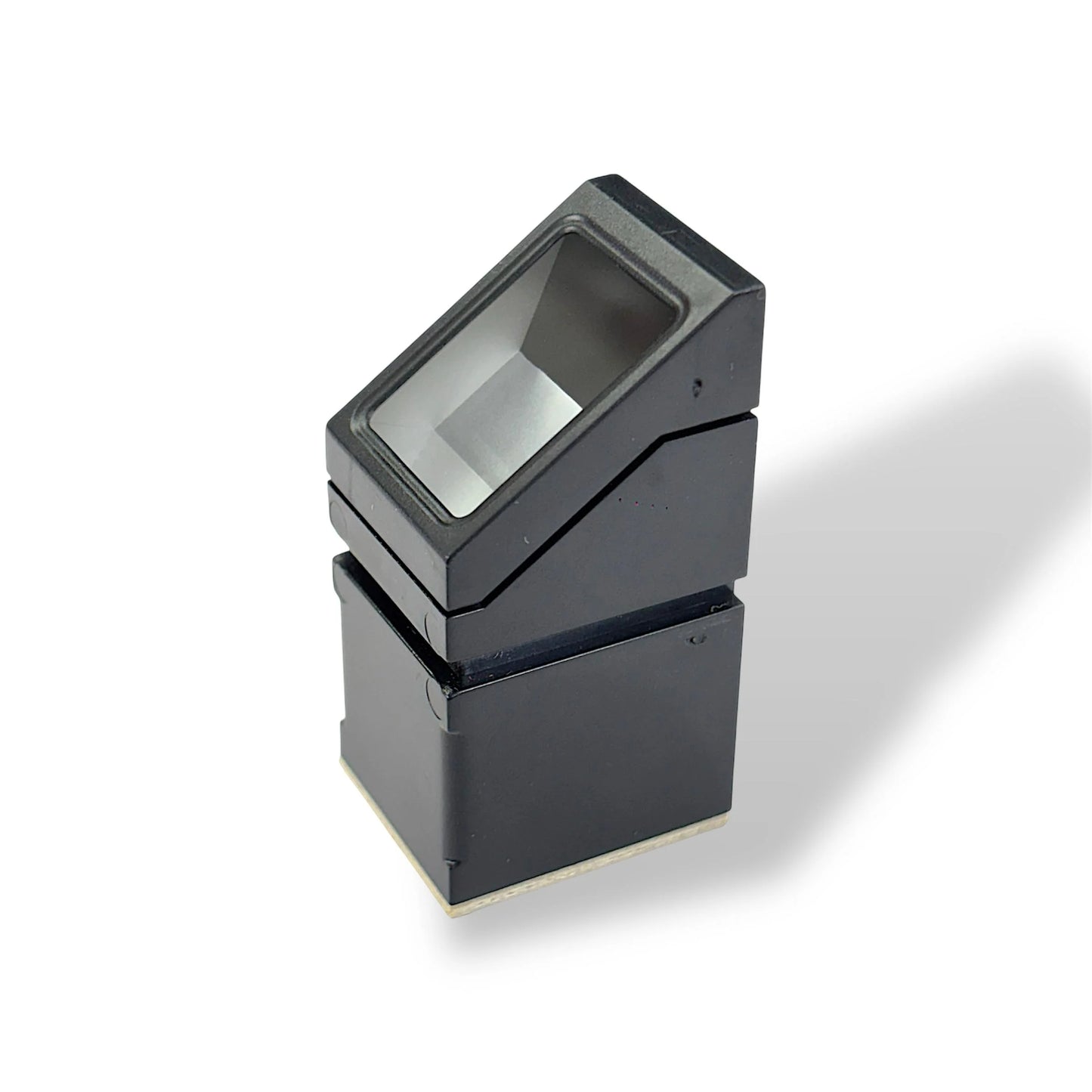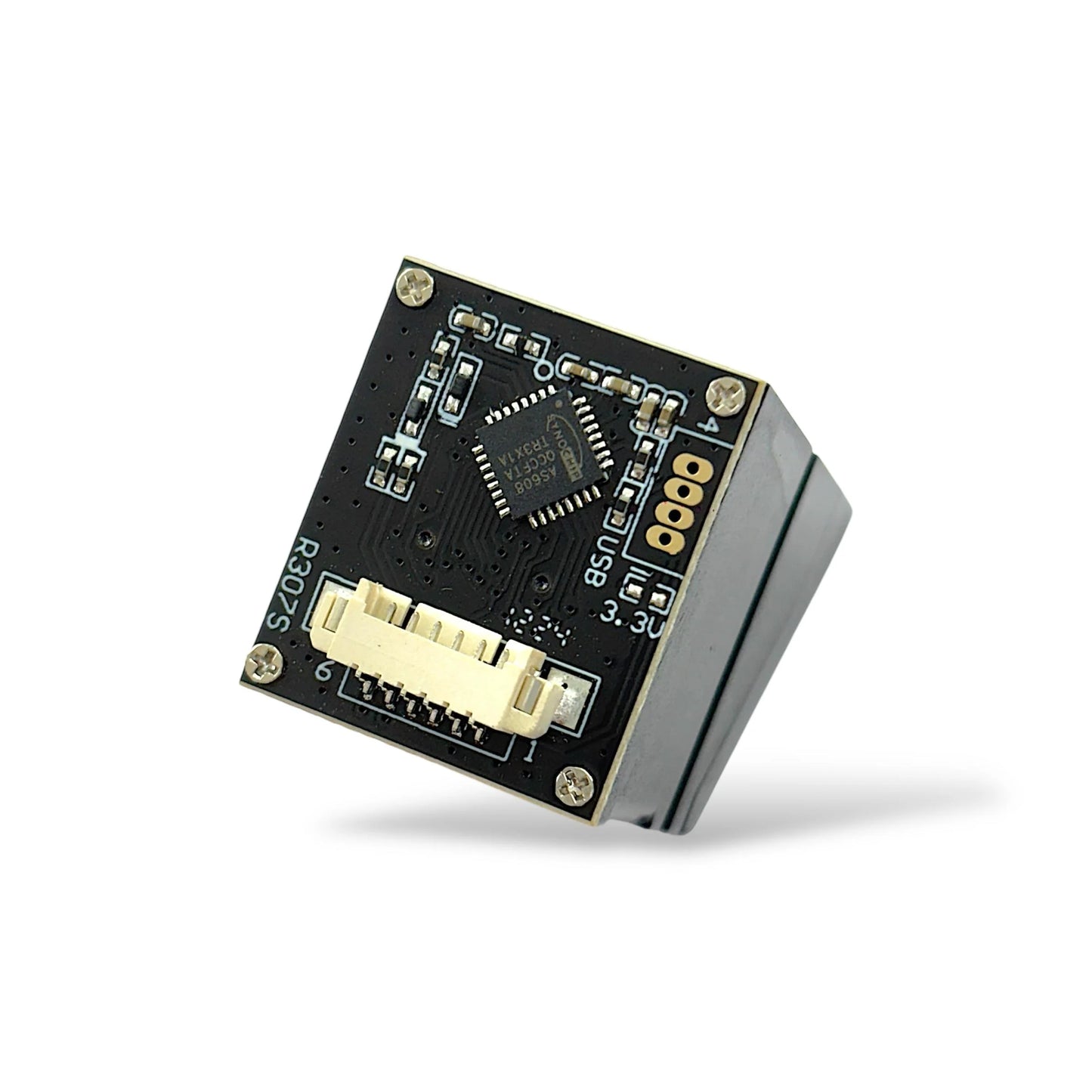Harish Projects
Fingerprint Sensor 307R
Fingerprint Sensor 307R
Couldn't load pickup availability
Share
Specification
- Operating voltage (v): 4.2 ~ 6 VDC
- Current consumption: ≤75mA
- Verification Speed: 0.2 sec
- Scanning Speed: 0.3 sec
- Character file size: 256 bytes
- Template size: 512 bytes
Description
The Fingerprint Sensor 307R is a biometric authentication device that is designed to capture and analyze fingerprint patterns for security purposes. It is commonly used in various applications such as smartphones, laptops, access control systems, and other devices requiring secure identification.
The sensor utilizes capacitive technology to detect the unique patterns and ridges present on an individual’s fingertips. It captures a high-resolution image of the fingerprint, which is then converted into a digital template. This template is stored securely and can be used for subsequent authentication or comparison purposes.
The Fingerprint Sensor 307R offers reliable and accurate fingerprint recognition, enabling efficient and secure access control. It often employs advanced algorithms to enhance the accuracy and speed of identification, minimizing false rejections and false acceptances.
The sensor is typically compact in size and can be integrated into various devices seamlessly. It may feature a durable and scratch-resistant surface to withstand regular use. Additionally, it may support various communication interfaces such as USB, Bluetooth, or other proprietary protocols for seamless integration with different systems.
Overall, the Fingerprint Sensor 307R provides a secure and convenient method for user identification, helping to enhance security and privacy in a wide range of applications.
Specs:
1. Sensor Type: Capacitive or optical (common types of fingerprint sensor technologies).
2. Image Resolution: The resolution of the captured fingerprint image, usually measured in pixels per inch (PPI) or dots per inch (DPI).
3. Active Sensor Area: The physical area of the sensor surface that detects and captures the fingerprint.
4. Interface: The communication protocol or interface used to connect the sensor to a device (e.g., USB, Bluetooth, etc.).
5. Template Capacity: The number of fingerprint templates that can be stored on the sensor for identification or verification purposes.
6. False Rejection Rate (FRR): The percentage of valid fingerprints incorrectly rejected by the sensor.
7. False Acceptance Rate (FAR): The percentage of invalid fingerprints incorrectly accepted by the sensor.
8. Power Consumption: The amount of power the sensor requires to operate efficiently.
9. Operating Temperature: The range of temperatures within which the sensor can function optimally.
10. Dimensions: The physical size and form factor of the sensor.
Please note that these specifications can vary depending on the specific model and manufacturer of the fingerprint sensor. For accurate and up-to-date information on the Fingerprint Sensor 307R, we recommend referring to the manufacturer’s official documentation, product website, or contacting the manufacturer directly.






